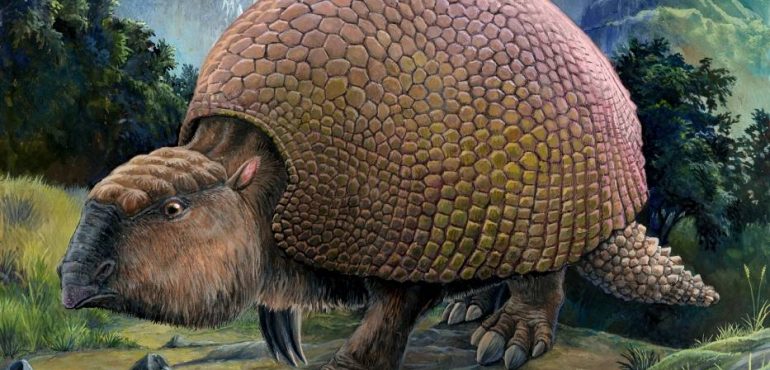But not just this giant armadillo. Giant sloths, four-tusked elephants, and a whole bunch of other ancient mammals that roamed the earth over 10,000 years ago also all played a role.
Over at National Geographic's The Plate, they're looking at the history of how the modern avocado evolved. The history of humans and avocados stretches back quite far — people started farming them in Mexico all the way back in 5,000 BCE. But, long, long before we started taking a hand in their development, the giant mammals of the Cenozoic Era were the first animals that helped the avocado to evolve:
The avocado as we know it developed to tempt the megafauna of the Cenozoic Era—massive mammals capable of gulping down an avocado whole and later, just as competently, eliminating its sizable central seed. This arrangement suited everybody: avocado eaters got a healthy, fat-filled meal and the avocado's seeds were dispersed far and wide in piles of seed-supporting dung. Among the avocado eaters were such behemoths as Megatherium, the giant ground sloth, which weighed four tons and stood as tall as a giraffe; the rhinoceros-like Toxodon; Glyptodon, an armadillo the size of a Volkswagen Beetle; and the gomphotheres, proto-elephants with four sets of tusks, the lower pair shaped like enormous spatulas.
About 13,000 years ago, however, in the course of the Pleistocene extinction, the bulk of the world's megafauna vanished from the earth. The disaster—whatever it was—struck every continent. South America, hit the worst, lost 83 percent of its large mammals; North America lost 68 percent. Mammoths and mastodons, saber-tooth cats, dire wolves, woolly rhinos, and all the aforementioned avocado eaters died.
Fortunately, even though the animals that helped its spread went extinct, the avocado was able to hang around long enough for other species, like us, to figure out what Glyptodon already knew: That underneath its green spiky skin, the avocado was delicious.
You can read the whole thing right here.
Image: Artist's conception of a Glyptodon / Pavel Riha
Source: GIZMODO, Full Article






